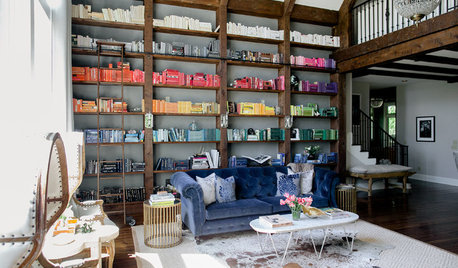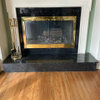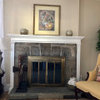HELP-fireplace insert not up to current codes
steelskies
11 years ago
Related Stories

ROOM OF THE DAYRoom of the Day: Color-Coded Bookcase Spiffs Up a Nashville Library
Starting from nothing, designer Hannah Crowell crafted an eclectic decor scheme that turns traditional style on its head
Full Story
CONTRACTOR TIPSBuilding Permits: 10 Critical Code Requirements for Every Project
In Part 3 of our series examining the building permit process, we highlight 10 code requirements you should never ignore
Full Story
CONTRACTOR TIPSBuilding Permits: What to Know About Green Building and Energy Codes
In Part 4 of our series examining the residential permit process, we review typical green building and energy code requirements
Full Story
BATHROOM DESIGNKey Measurements to Help You Design a Powder Room
Clearances, codes and coordination are critical in small spaces such as a powder room. Here’s what you should know
Full Story
STANDARD MEASUREMENTSThe Right Dimensions for Your Porch
Depth, width, proportion and detailing all contribute to the comfort and functionality of this transitional space
Full Story
SELLING YOUR HOUSEHelp for Selling Your Home Faster — and Maybe for More
Prep your home properly before you put it on the market. Learn what tasks are worth the money and the best pros for the jobs
Full Story
LIFE12 House-Hunting Tips to Help You Make the Right Choice
Stay organized and focused on your quest for a new home, to make the search easier and avoid surprises later
Full Story
SELLING YOUR HOUSE10 Tricks to Help Your Bathroom Sell Your House
As with the kitchen, the bathroom is always a high priority for home buyers. Here’s how to showcase your bathroom so it looks its best
Full Story
UNIVERSAL DESIGNMy Houzz: Universal Design Helps an 8-Year-Old Feel at Home
An innovative sensory room, wide doors and hallways, and other thoughtful design moves make this Canadian home work for the whole family
Full Story
ORGANIZINGGet the Organizing Help You Need (Finally!)
Imagine having your closet whipped into shape by someone else. That’s the power of working with a pro
Full StoryMore Discussions










southerncanuck
steelskiesOriginal Author
Related Professionals
Elgin Fireplaces · Silver Spring Fireplaces · Ashwaubenon Interior Designers & Decorators · Mount Laurel Interior Designers & Decorators · Wareham Interior Designers & Decorators · Clive General Contractors · Enfield General Contractors · Exeter General Contractors · Milford General Contractors · Mountlake Terrace General Contractors · North Lauderdale General Contractors · Orangevale General Contractors · Villa Park General Contractors · Westmont General Contractors · Jefferson Valley-Yorktown Lightingberlin
christopherh
cearbhaill (zone 6b Eastern Kentucky)
steelskiesOriginal Author
akamainegrower
steelskiesOriginal Author
berlin
southerncanuck
steelskiesOriginal Author
southerncanuck
steelskiesOriginal Author
southerncanuck
steelskiesOriginal Author
berlin
steelskiesOriginal Author
Reid0
christopherh